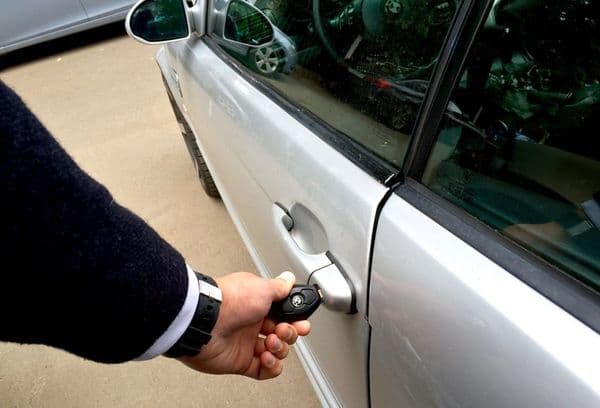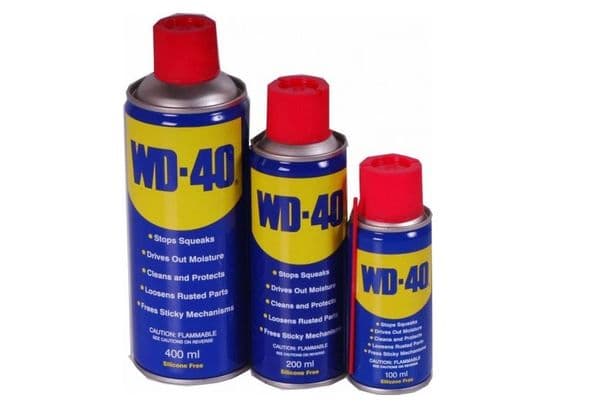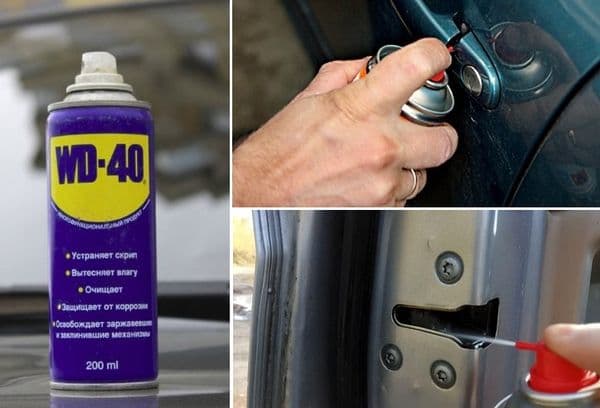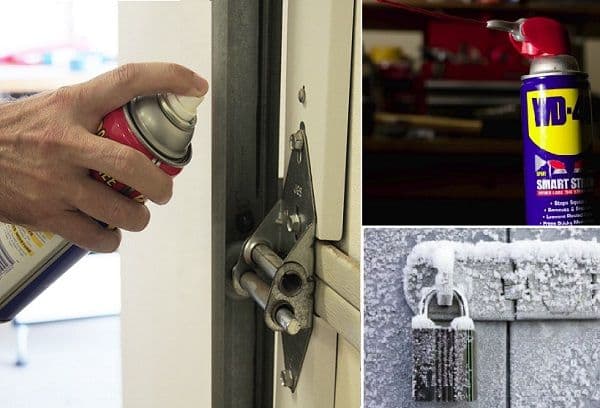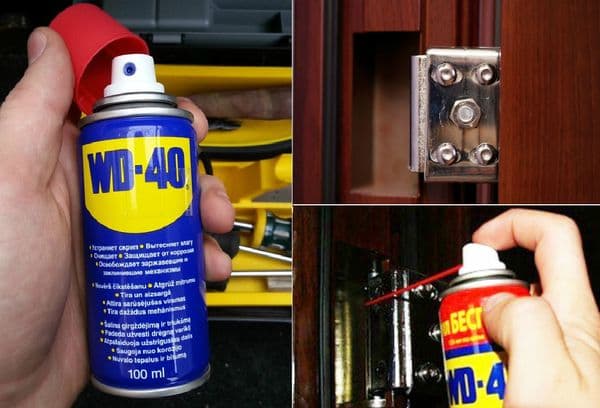How to lubricate a door lock: instructions for home and car
Any lock is a mechanical system. Every day it experiences heavy loads: friction, wear, strength. Without prevention, the lock begins to jam and closes worse. It becomes clogged with dust, corrodes, and wears out. Therefore, at least once a year you need to lubricate the door locks of both the car and the house, garage, etc. It is best to use special dry lubricants in the form of a powder or spray.
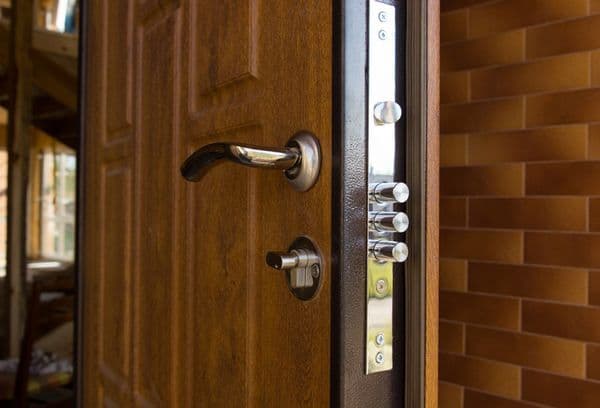
Car lock
Car closing devices experience all the troubles of weather vagaries: from heavy rains to winter frosts. Experienced drivers advise regular maintenance of locks, at least once a season, and be sure to prepare them for winter in the fall. This will protect the system in cold weather, and you won't have to fight with the doors. For the same purpose, lubricate the trunk lock and hinges.
What is suitable for car doors
When buying a lubricant, you need to carefully study the characteristics. The main parameter is cold resistance. The material must withstand sub-zero temperatures. In addition, wear resistance and evaporation rate are important.
There is no need to disassemble the doors to lubricate the locks and hinges (if there is no internal damage or the structure is not clogged with dirt). In most automotive and hardware stores, you will find lubricants in a special container: a bottle with a nozzle, which is equipped with a long thin proboscis.
Drivers highly appreciated lubricants such as WD-40, Litol, and modern silicone types, which are gradually replacing the usual brands.
Lubrication procedure:
- Open the car door.
- Use a rag to remove old grease from the lock (the locking mechanism is located at the bottom).
- Take a screwdriver that matches the diameter of the locking bracket.
- Insert into the groove and turn towards you, opening the lock.
- Remove any remaining old grease that appears.
- Spray the area with WD-40 and remove any spills with a clean rag.
- Apply silicone grease on top and wipe off any excess.
- Remove the screwdriver from the slot and lift up the lock handle on the front side of the door.
- Close and open the door a couple of times to distribute the lubricant throughout the mechanism.
In some cases, you have to disassemble the parts and clean the inside of the locks and hinges. It is better to entrust this procedure to a car service. Unfortunately, lubricating the bolt is the only thing that can be done with a cylinder-type lock, and these are the ones that are installed on all cars.
Prevention from freezing and jamming
You need to understand that cylinder locking systems are the most capricious and sensitive to contamination. Protective mudguards and visors provide sufficient protection from dust. Therefore, it is recommended to change the lubricant every 3 months.
The second aspect is moisture. It enters the castle with precipitation, with melting snow and in the form of condensation from the air. It is impossible to protect the inside of the larva from this scourge, but at least the bolt and door hinges are accessible for lubrication.
Finally, the third factor influencing the operation of car locks is the material from which they are made. One of the common problems is that the battery in the unlocking key fob is dead, and the driver’s door key does not work.This means that due to prolonged inactivity, the lock has oxidized and become “stuck.” Most likely it will have to be replaced. Thus, one of the most important preventive measures is to use it periodically.
Lock on the garage
Today, garages are locked with lever locks, and less commonly, but there are also hinged pin models. All of them must be protected from precipitation. For a mortise lever, you need to provide a box, preferably a welded one. Since the garage door is most often single-layered, and the body of the lock is exposed to the open air. The hinged one is usually closed with a visor.
Both types must be used regularly and lubricated at least once a season. Dry options are ideal, but silicone and WD-40 also perform well. It is important that the lubricant withstands humidity, temperature changes, heat and cold, and also evaporates slowly - then the lock will not jam and will always reliably block the doors.
Home locks
There are usually different types of locking devices on houses and indoors. There is usually a lever lock embedded in the iron entrance door of apartments. Its mechanism is covered with a casing, and the closure occurs with several pins. This device is quite complex, and using folk remedies is not recommended. Experts consider dry graphite lubricant or “Litol” to be optimal if the door is external and faces the street.
How to lubricate the lever lock:
- Open the door and extend the rod mechanism to the limit.
- Coat the pins with dry lubricant.
- Completely close and open the lock several times.
Between rooms there are most often simpler locks - cylinder locks. If one begins to jam, it is worth lubricating its bolt. Graphite or another dry lubricant based on it is also ideal.The prevention algorithm is the same as for a lever lock.
Advice
Some craftsmen recommend blowing dry lubricant into the hole of the lever lock to increase the lubrication area. There is no way to do this with cylinder engines: the internal mechanism is too precise and small and will fail.
If lubrication doesn't help
Most likely, if no maintenance has been carried out and the mechanism is already several years old, simple lubrication will not be enough. You will have to remove and disassemble the lock. The procedure requires experience and accuracy, otherwise the mechanism will not fall into place.
Procedure:
- Remove the lever lock and open it.
- Use a brush to remove debris.
- If necessary, use cotton or gauze pads and alcohol or another solvent to remove rust.
- Lubricate with dry lubricant.
- Assemble and put in place.
Cylinder structures are, by and large, disposable. Try to remove the cylinder, clean it from debris and dirt, dry lubricate the bolt and its rotation axis, and rotate it several times. Put it in the door and try the action. If this does not help, the lock will have to be changed.
Prevention is the most important condition for locks. Factory lubricant lasts no longer than 1 year; later it needs to be updated. Taking the lock apart is not a good idea unless you are a locksmith. It is better to entrust complete cleaning and lubrication to professionals. However, everyone can apply lubricant to the base of the crossbars once every 4 months or at least once a year and close and open the mechanism several times.
Modern industry offers convenient cylinders with long thin nozzles that allow you to work precisely and accurately. Such care is often enough to ensure that the lock remains in good working order for many years.
